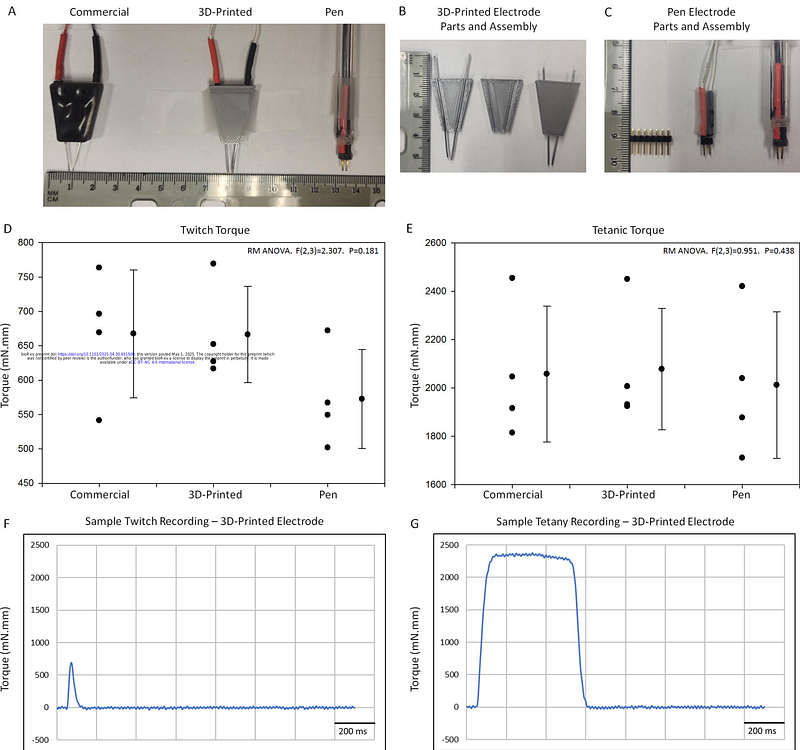Custom-Built Electrodes Perform Comparably to a Discontinued Commercial Electrode for Neuromuscular Electrical Stimulation in Mice

Custom-Built Electrodes Perform Comparably to a Discontinued Commercial Electrode for Neuromuscular Electrical Stimulation in Mice
Odeh, B. H.; Wellman, A. L.; Ameye, M.; Atwood, Z.; Gray, L.; Saravanan, A.; Poluru, H.; Begam, M.; Jones, T. I.; Roche, R.; Roche, J. A.
AbstractObjective: A commercial electrode used for transcutaneous neuromuscular electrical stimulation (NMES) in mice is no longer available. In response, we developed two low-cost, customizable alternatives -- a 3D-Printed Electrode and a Pen Electrode assembled from off-the-shelf jumper wire components -- and evaluated their performance relative to the discontinued commercial standard. Methods: We conducted in vivo NMES of the left hindlimb ankle dorsiflexors in C57BL/6J mice using three electrode types: a Simple Electrode (previously available as BS4 50-6824, Harvard Apparatus), our novel 3D-Printed Electrode, and our novel Pen Electrode. Contractile torque was recorded during twitch and tetanic contractions, and electrode performance was evaluated based on peak torque values. A repeated measures ANOVA was used to compare torque generated by each animal for the three different types of electrodes. Results: Both custom electrodes generated twitch and tetanic responses comparable to those of the Commercial electrode. No statistically significant differences were observed in peak torque values in either twitch (p = 0.181) or tetany (p = 0.438). Conclusion: Custom-built 3D-printed and Pen-style electrodes offer low-cost, accessible alternatives to discontinued commercial devices for murine NMES studies. These tools can facilitate continued use of electrical stimulation protocols in preclinical neuromuscular research.